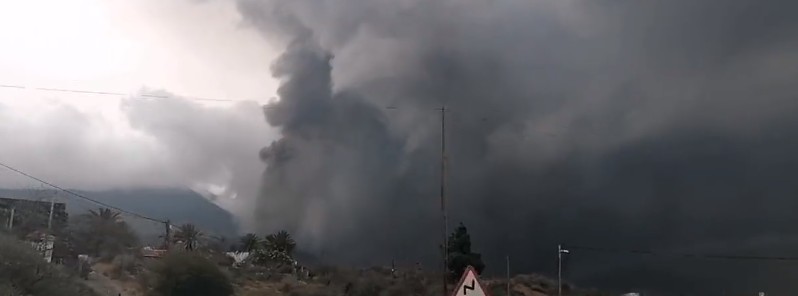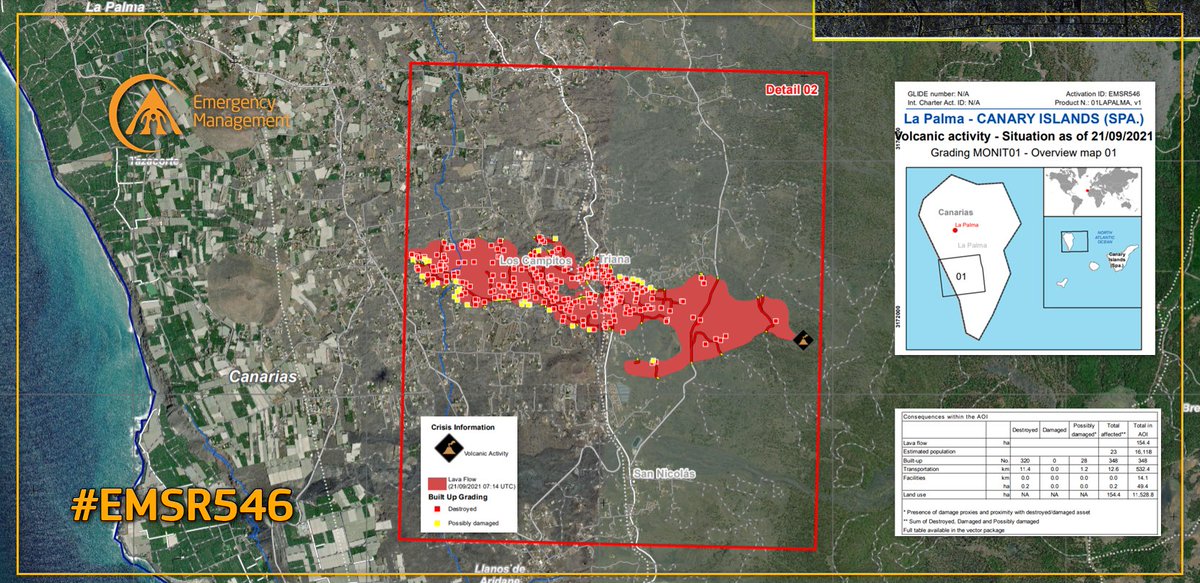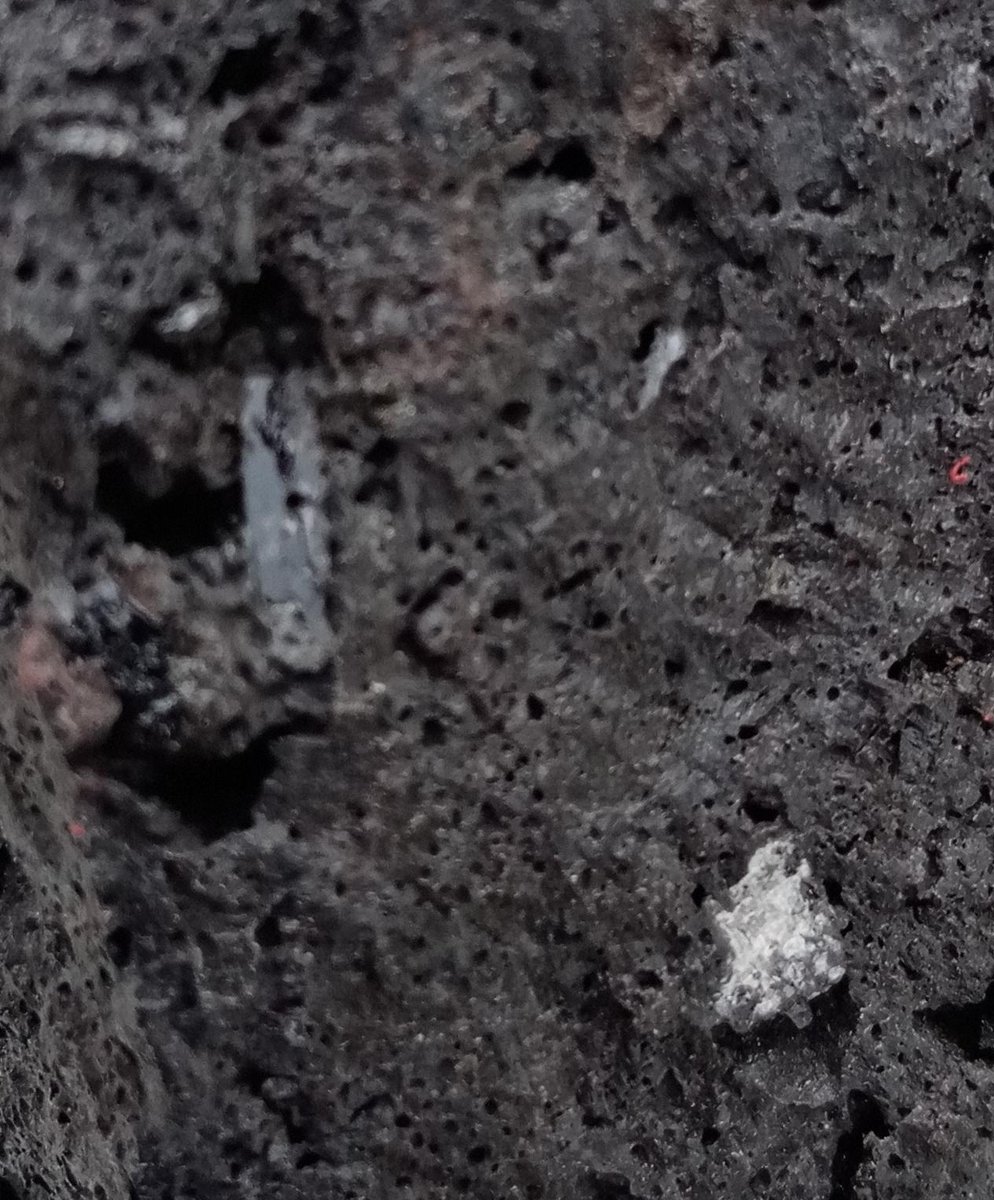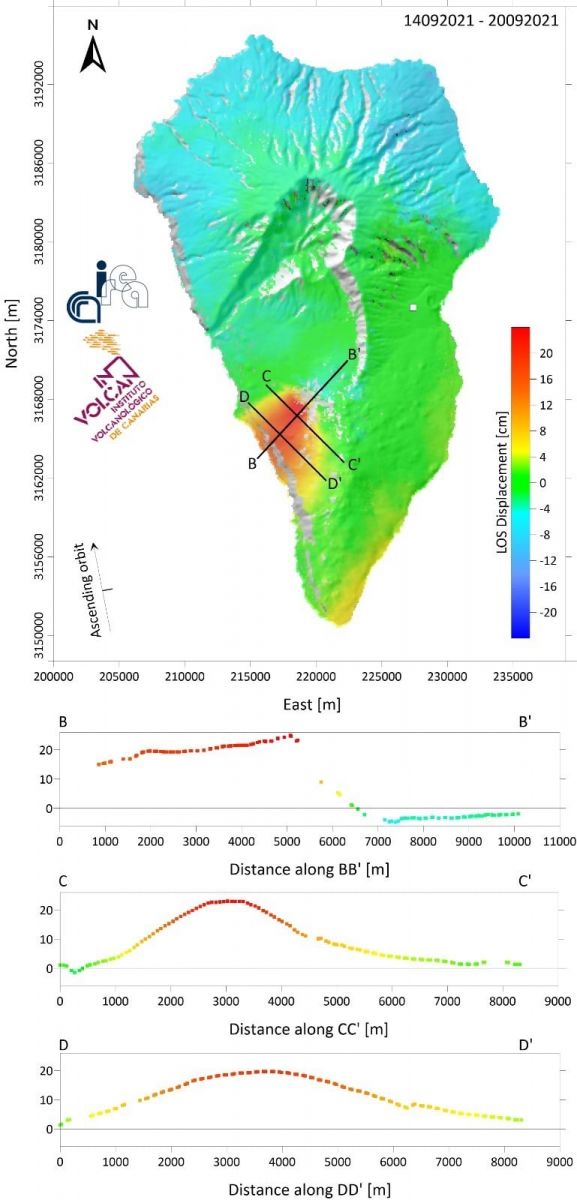Volcanic activity at La Palma more explosive with large amount of ash in the atmosphere, Canary Islands

A strong increase in the amplitude of volcanic tremor was observed at Cumbre Vieja volcano, La Palma, Canary Islands around 12:00 UTC on September 21, indicating the intensity of strombolian activity is increasing. The activity further intensified on September 22 with a large amount of ash in the atmosphere.
"The activity on the morning of September 22 is more explosive and emitting a large amount of ash into the atmosphere," INVOLCAN said.1 The noise level has also increased.
Lava fountaining is still intense and reaching a height of several hundred meters.
El grupo de INVOLCAN dirigiéndose esta mañana hacia el foco eruptivo. Hoy la actividad es más explosiva con gran cantidad de cenizas en la atmósfera #ErupcionenLaPalma #lapalma pic.twitter.com/rEndFOkRU5
— INVOLCAN (@involcan) September 22, 2021
Vídeo de nuestro compañero Iván Cabrera en el que se ve un remolino generado por el calor de la colada de lava / Video of our colleague Iván Cabrera in which a whirlpool generated by the heat of the lava flow can be seen pic.twitter.com/D8J0O2Rr0F
— INVOLCAN (@involcan) September 22, 2021
The surface affected by lava has reached 154 ha (380 acres) on September 21.
At least 185 buildings have been destroyed so far and more than 5 700 people evacuated.




The first provisional report of lava sample contains phenocrysts of plagioclase and pyroxene.
"The lava is of basaltic composition – a fine-grained, mafic igneous rock characterized by lower viscosity and lower gas content related to hawaiian and strombolian eruptions," said volcanologist Tom Pfeiffer.2


Image credit: INVOLCAN
The data analysis of imagery acquired by ESA's Sentinel-1 satellite clearly shows how the area affected by the eruption has been deformed more than 20 cm (7.9 inches) by Monday, September 20.
This deformation was caused by the magma's push towards the rocks around it, INVOLCAN said.


Image credit: INVOLCAN, Copernicus EU
On September 21, INVOLCAN conducted further measures to assess and monitor the amount of sulfur dioxide emitted into the atmosphere.
"The results achieved for this third day of the eruption reflect an SO2 emission rate between 6 140 and 11 500 tons per day."
The emission rate on September 20 was between 7 997 and 10 665 tons per day.
Geological summary
The elongated volcano dates back to about 125 000 years ago and is oriented N-S. Eruptions during the past 7 000 years have originated from the abundant cinder cones and craters along the axis of Cumbre Vieja, producing fissure-fed lava flows that descend steeply to the sea.
Historical eruptions at La Palma, recorded since the 15th century, have produced mild explosive activity and lava flows that damaged populated areas.
The southern tip of the island is mantled by a broad lava field produced during the 1677/78 eruption. Lava flows also reached the sea in 1585, 1646, 1712, 1949, and 1971.3
References:
1 INVOLCAN – Twitter
2 Cumbre Vieja volcano eruption, La Palma: first lava samples – VolcanoDiscovery
3 La Palma – Geological summary – GVP
Featured image credit: INVOLCAN

Commenting rules and guidelines
We value the thoughts and opinions of our readers and welcome healthy discussions on our website. In order to maintain a respectful and positive community, we ask that all commenters follow these rules.